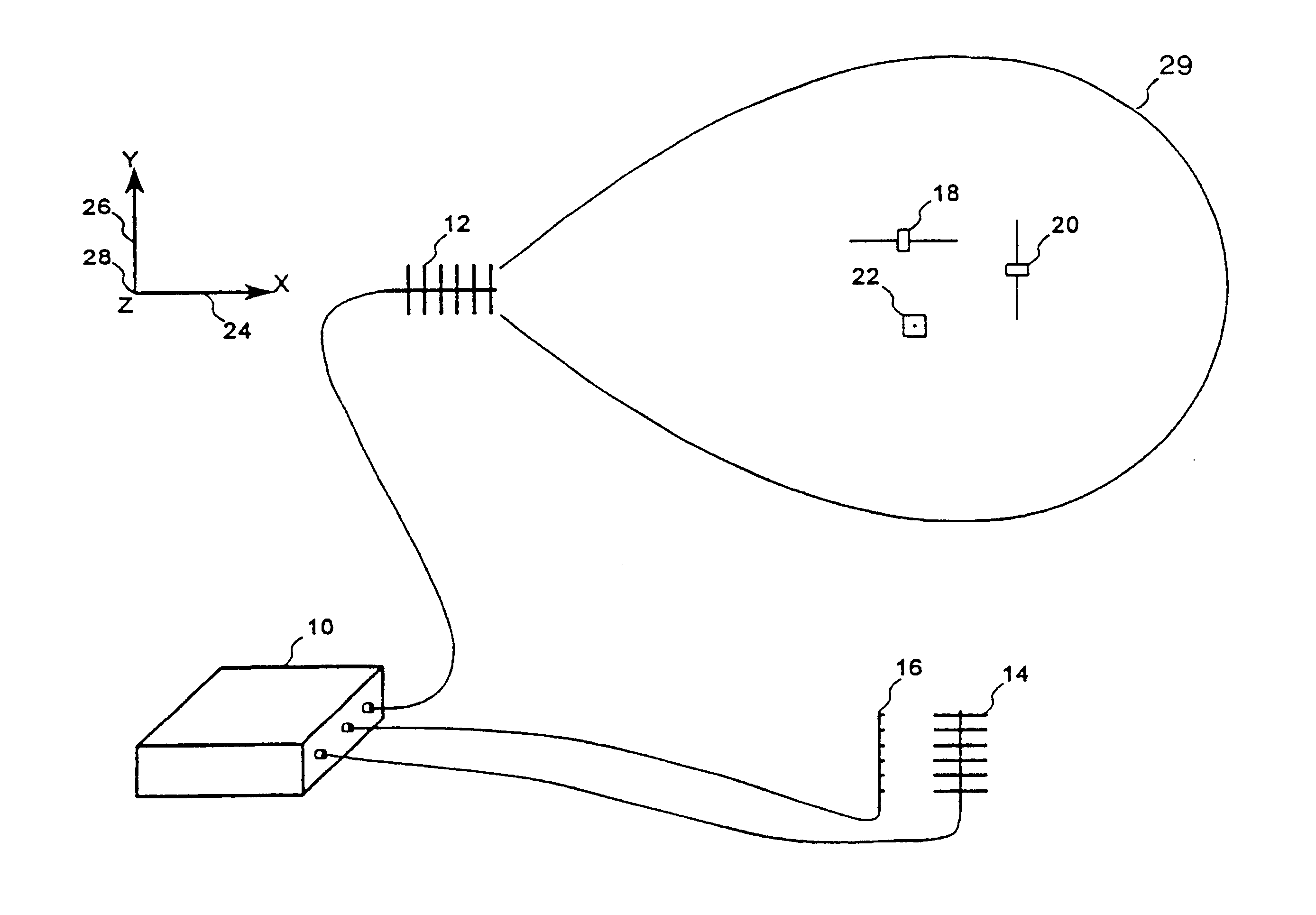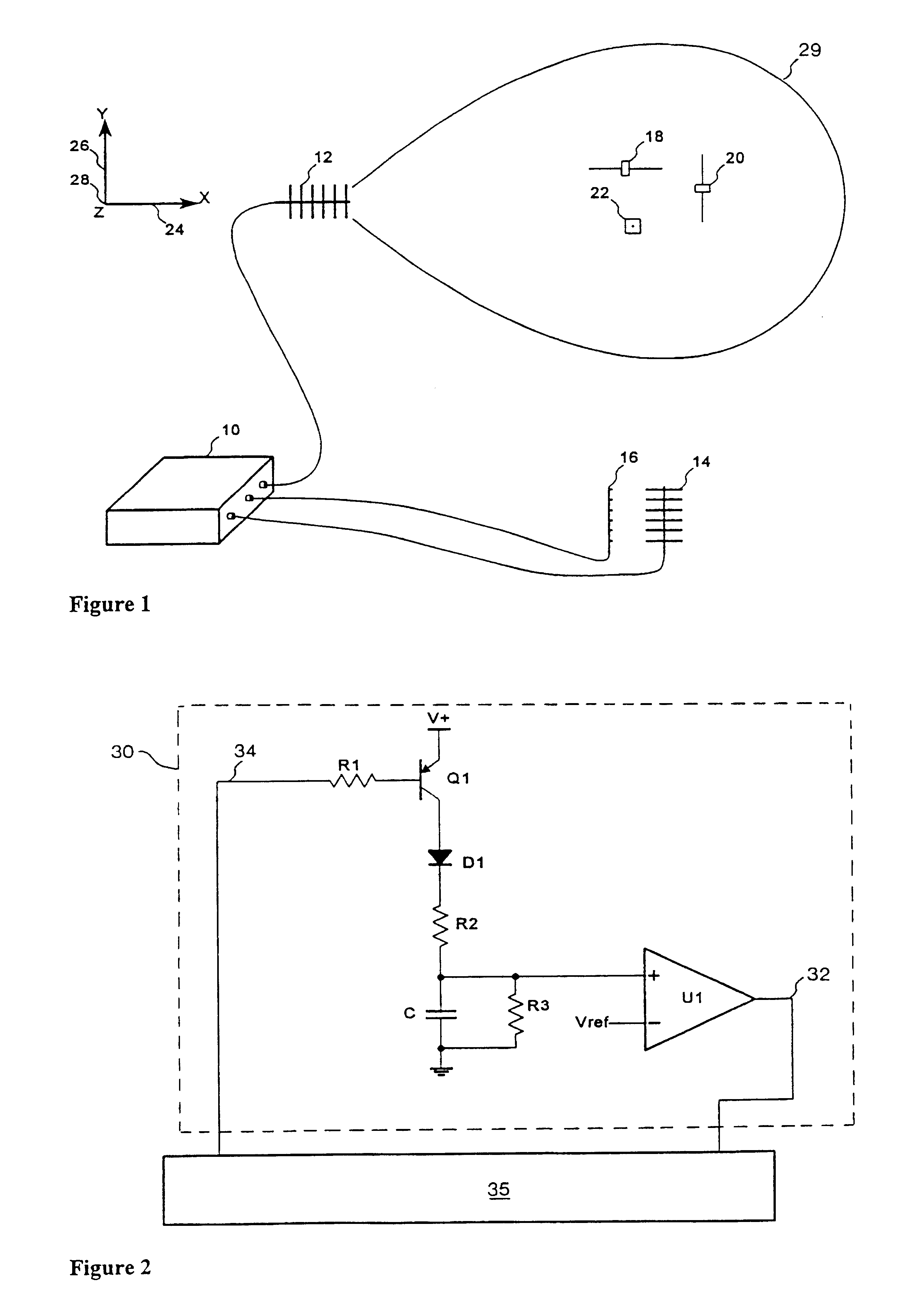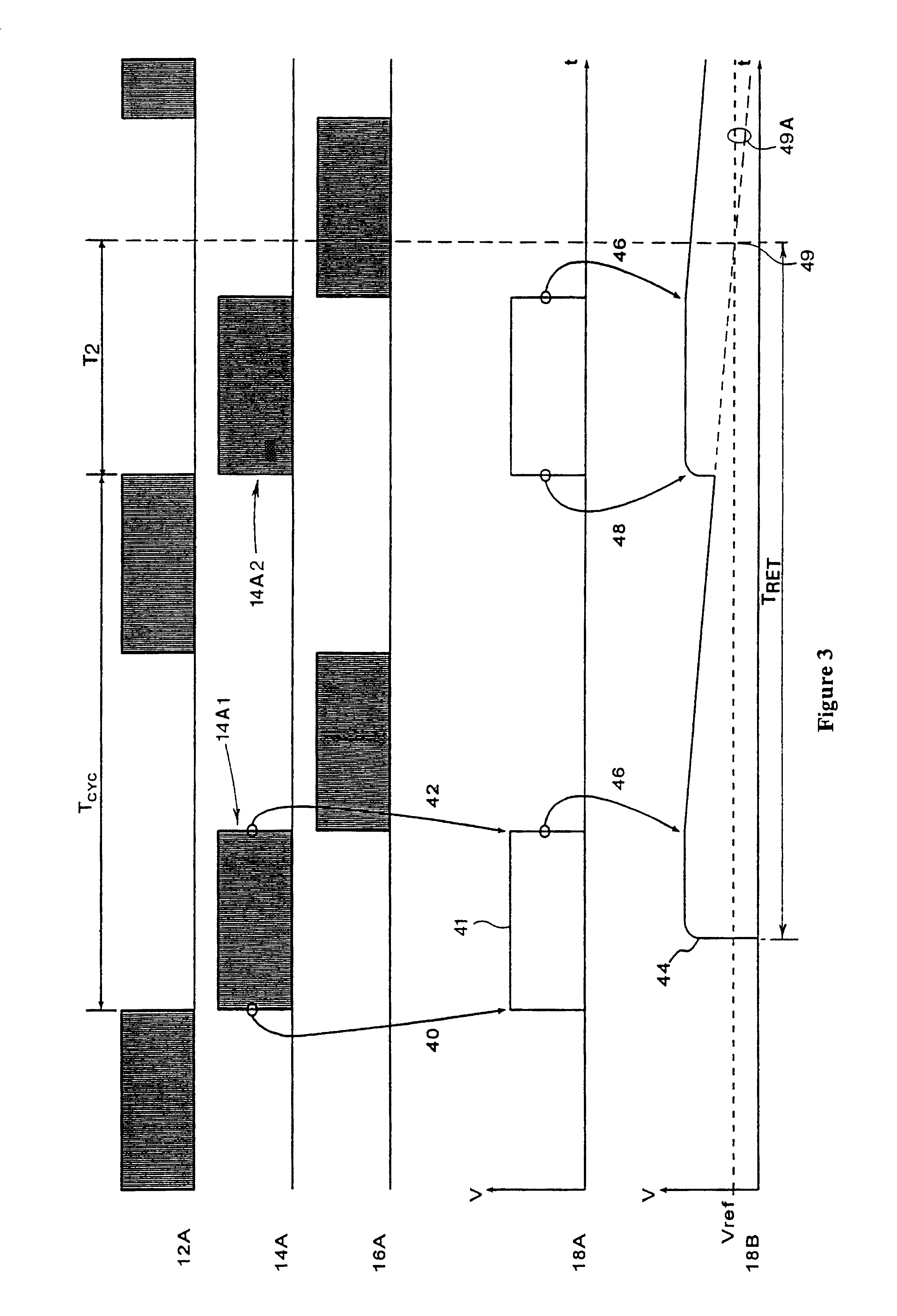Multi-dimensional electronic identification of articles
a multi-dimensional electronic identification and article technology, applied in the field of multi-dimensional electronic identification of articles, can solve the problems of null or dead zones in the radiation pattern, polarisation is not capable of detecting all transponders, and general null or dead zones,
- Summary
- Abstract
- Description
- Claims
- Application Information
AI Technical Summary
Benefits of technology
Problems solved by technology
Method used
Image
Examples
Embodiment Construction
[0036]FIG. 1 shows a reader or interrogator 10 with three Yagi antennas 12, 14 and 16. The antennas are positioned so that differently oriented transponders 18, 20 and 22 are within the effective reading range or energising field of at least one of the antennas. Antenna 12 is horizontally polarised and is aligned along the x-axis 24, antenna 14 is horizontally polarised and is aligned along the y-axis 26 and antenna 16 is vertically polarised and is aligned along the y-axis 26. The z-axis 28 extends vertically into the page. Transponder 18 lies along the x-axis 24, transponder 20 along the y-axis 26 and transponder 9 along the z-axis28. The effective interrogator field or reading range of antenna 12 is depicted by an oval footprint 29. The effective reading range is defined as the range within which any transponder which has the correct antenna polarisation for reader antenna 12 will collect sufficient energy to power its circuitry. Thus transponder 18 will essentially receive energ...
PUM
 Login to View More
Login to View More Abstract
Description
Claims
Application Information
 Login to View More
Login to View More - R&D
- Intellectual Property
- Life Sciences
- Materials
- Tech Scout
- Unparalleled Data Quality
- Higher Quality Content
- 60% Fewer Hallucinations
Browse by: Latest US Patents, China's latest patents, Technical Efficacy Thesaurus, Application Domain, Technology Topic, Popular Technical Reports.
© 2025 PatSnap. All rights reserved.Legal|Privacy policy|Modern Slavery Act Transparency Statement|Sitemap|About US| Contact US: help@patsnap.com



